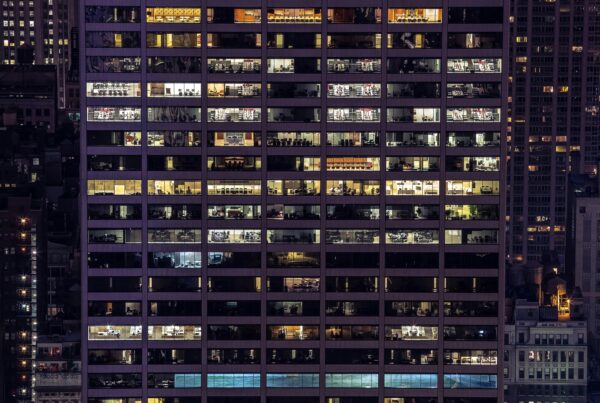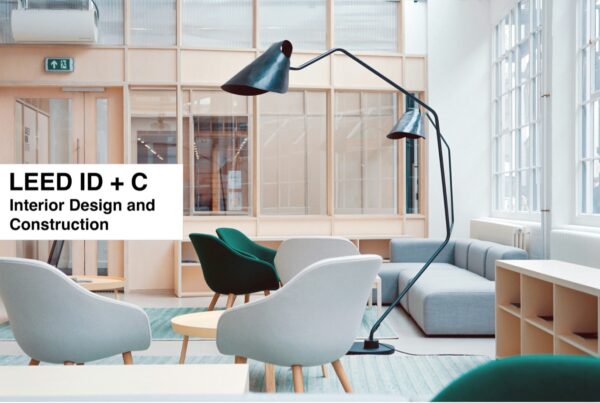There used to be a misconception that sustainability was expensive. While true that many of the practices involved in the process of building sustainably (for example, the use of new technologies and materials) required a higher initial investment, collection of long-term performance data and the increasing acceptance of life-cycle costing methods has allowed for the demonstration of the worth of the initial investment. A business case was established. We now look at a newer concept – Healthy Buildings.
In the last decade or so, it has become accepted that designing and constructing our built environment for sustainability can positively impact bottom lines. Both in the construction and design community as well as among investors and consumers, “green” design elements are becoming an expectation. A new issue of concern is now coming into focus – the need for the design of “healthy buildings”, conducive both towards environmental health but also that of its occupants.
Sick Building Syndrome (SBS) is a recognized condition in which occupants of a building experience significant health issues that can be tied to the operation or design of a building. According to the World Health Organization, indoor air pollution causes 14-times more deaths than outdoor air pollution. Use of daylighting and availability of line-of-sight to the outdoors has been linked to mental health and productivity. Privacy, comfort control and ambient noise levels are all factors in occupant satisfaction.
Since most of us spend roughly 90% of our days inside, the indoor environment is a critical health factor.
While it is intuitively grasped that health is important, the move towards better living and work environments can be strongly supported by establishing strategic business drivers. Consider:
-
Financial Impact
- Hundreds of billions of dollars lost worldwide due to low productivity, service quality, work absences, disability and health claims.
- Market data shows that healthier building practices allow owners to lease space more quickly, charge a premium rent and increases building value
-
Public Profile and Perception
- Public goodwill is arguably an important factor in determining the success of an organization.
- Organizations becoming employers of choice will attract the top talent and achieve higher employee retention rate.
- Desirable buildings demand higher market prices and attract owners and tenants more invested in the maintenance of the building.
-
The Legal Case
- Requirements vary but generally establish the expectation that a building is safe for its inhabitants. “Safe” is an encompassing term.
- Due diligence is the absolute minimum requirement but there is an increasing burden of responsibility towards owners and employers.
- Some jurisdictions have or are considering instituting legislative provisions to protect the health of building occupants
These uncontestable business arguments trump any gut feeling.
While general wisdom and best practice can be used to achieve a healthful building environment, designers and contractors that are well versed in current technology and market trends can bring huge value to a project. Established building certification systems, among which LEED is an industry leader, are a very useful tool that can contribute to project profile and success.
LEED has already established the economic benefit of healthy buildings. General improvements via retrofit design have been demonstrated to increase productivity by up to 6 percent. Of course, maximum impact can be achieved during the initial design process.
LEED sets prerequisites (minimum criteria) for indoor air quality performance, environmental tobacco smoke control and awards credits for features such as bicycle facilities, shower access, use of low-emitting materials, interior lighting, thermal comfort, integrated pest management, daylight and quality views. Expectations are more rigorous than ever in LEED v4.
Other trends in healthy building design include spaces that enhance social interaction, biophillic design principles, layouts that promote movement and encourage physical activity.
As an aside, it is interesting to consider how healthy building practices can be observed in the elements of traditional architecture across many cultures and regions. Consider ancient Moorish design and Chinese Feng Shui principles that both focus on the importance of air flow and quality and the use of water features and courtyards in quadrangle constructions to maintain thermal regulation and comfort. The world has a tradition of sophisticated design principles that have been abandoned but that we are slowly rediscovering.
Whatever the size and purpose of your project, discuss health and sustainability issues with your design team.
It is in the interest of owners and users to insist on the rigorous application of responsible and intelligent design. There is so much research and development ongoing and a wealth of information available. Partners in design and construction that are educated and experienced are invaluable assets to a successful project.










Great article! I am happy to see that people are starting to acknowledge health and wellbeing as directly related to productivity. Employee satisfaction is an important part of a successful business… I knew that we spend a lot of time indoors in general, but 90% of the day?! Makes it an issue worth looking into seriously…
Thanks for the comment, Tim!
When you really think about it, it’s no surprise that, between our work and homes, so many of us spend the huge majority of our time indoors.
Designing our built environment with our health and wellbeing as a priority is really something to strive for.